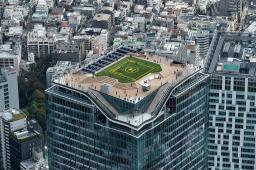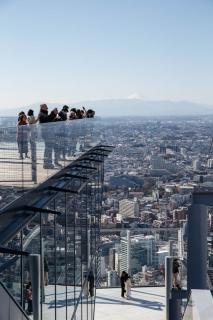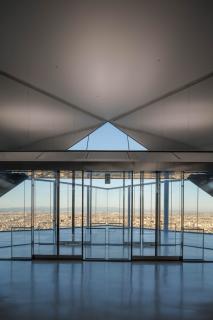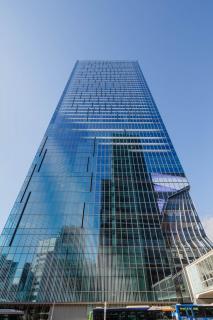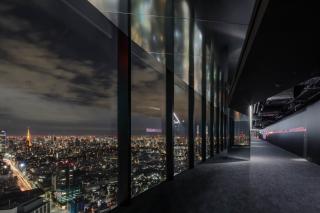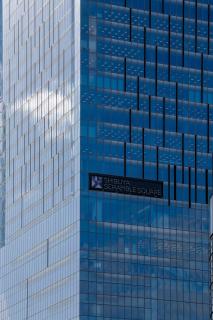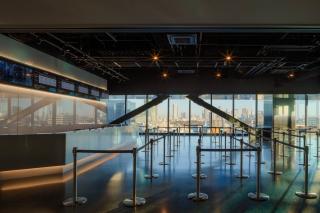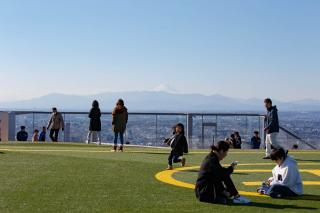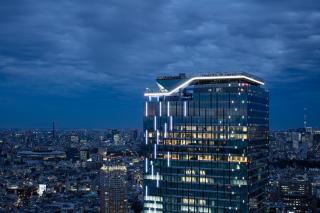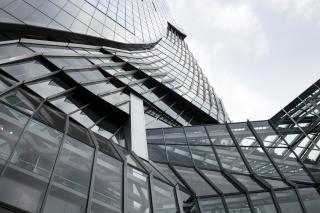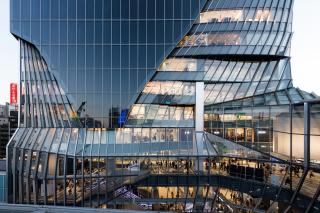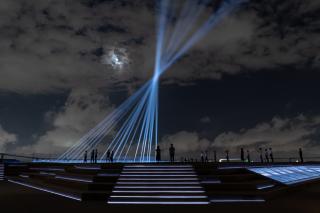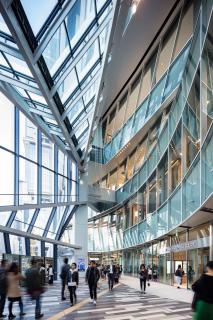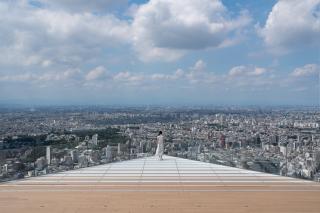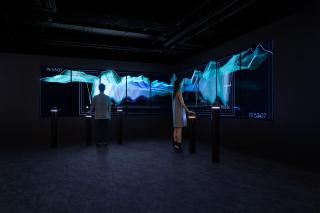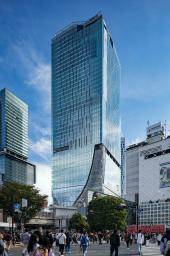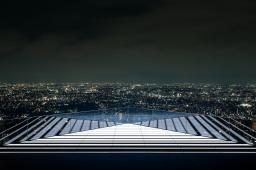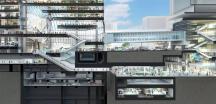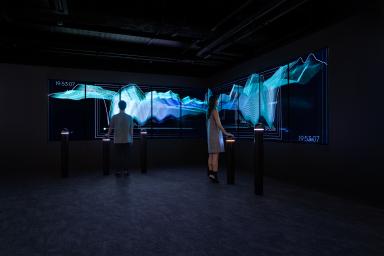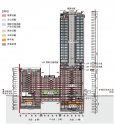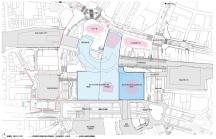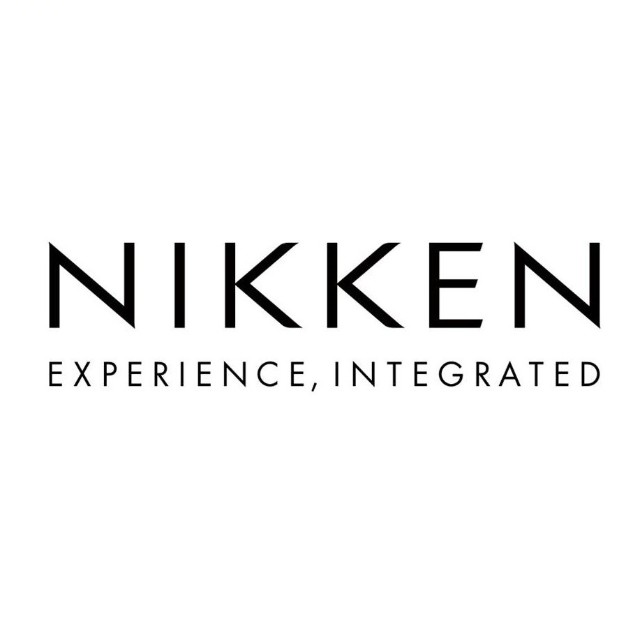東京的商業(yè)中心澀谷站匯集有9條地鐵線�,日均客流量約330萬人次���,是日本具有代表性的交通樞紐���。除了傳統(tǒng)的公共交通便利外,為了給所有來訪者提供一個(gè)安全宜人的城市環(huán)境���,澀谷中心地區(qū)正在進(jìn)行一系列大規(guī)模的城市開發(fā)重建��。梳理改善車站周邊的動(dòng)線��,建設(shè)抗災(zāi)設(shè)施���,積極引進(jìn)IT等新興產(chǎn)業(yè),并加強(qiáng)面向世界的文化傳播力�����。作為一系列開發(fā)核心項(xiàng)目的澀谷SCRAMBLE SQUARE����,位于澀谷站正上方,由高端寫字樓��、大型商業(yè)設(shè)施�、共創(chuàng)設(shè)施、觀景設(shè)施等構(gòu)成�,是一個(gè)包括車站改造在內(nèi)的城市再生示范項(xiàng)目。
Shibuya Station, the heart of Tokyo’s consumer culture, is Japan’s representative transportation hub for nine railway lines bringing 3.3 million passengers in and out every day. Aiming for a safe and pleasant city for all the visitors, in addition to its traffic convenience, Shibuya’s central area has been undergoing a major urban redevelopment with numerous projects to improve traffic flows around the station, construct disaster-resistant facilities, attract new industries such as IT, and enhance its global appeal as the cultural capital. Shibuya Scramble Square is the model project of urban redevelopment planning including a station, which stands right above Shibuya Station and consists of high-end offices, large-scale commercial facilities, a co-creation facility, and an observatory.
▼建筑全貌
Scene of the building ? 澀谷SCRAMBLE SQUARE
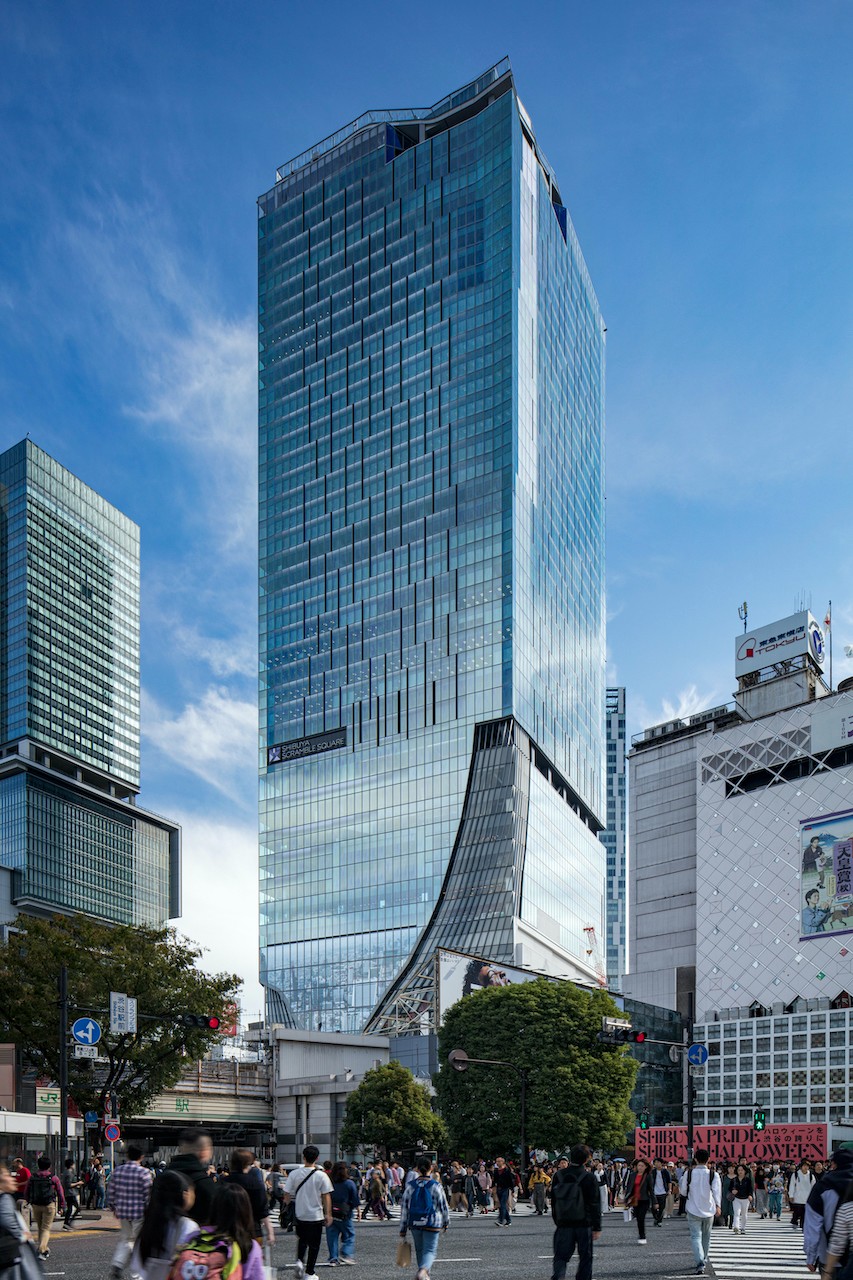
▼鳥瞰
Birdview ? 鈴木研一/Ken’ichi Suzuki
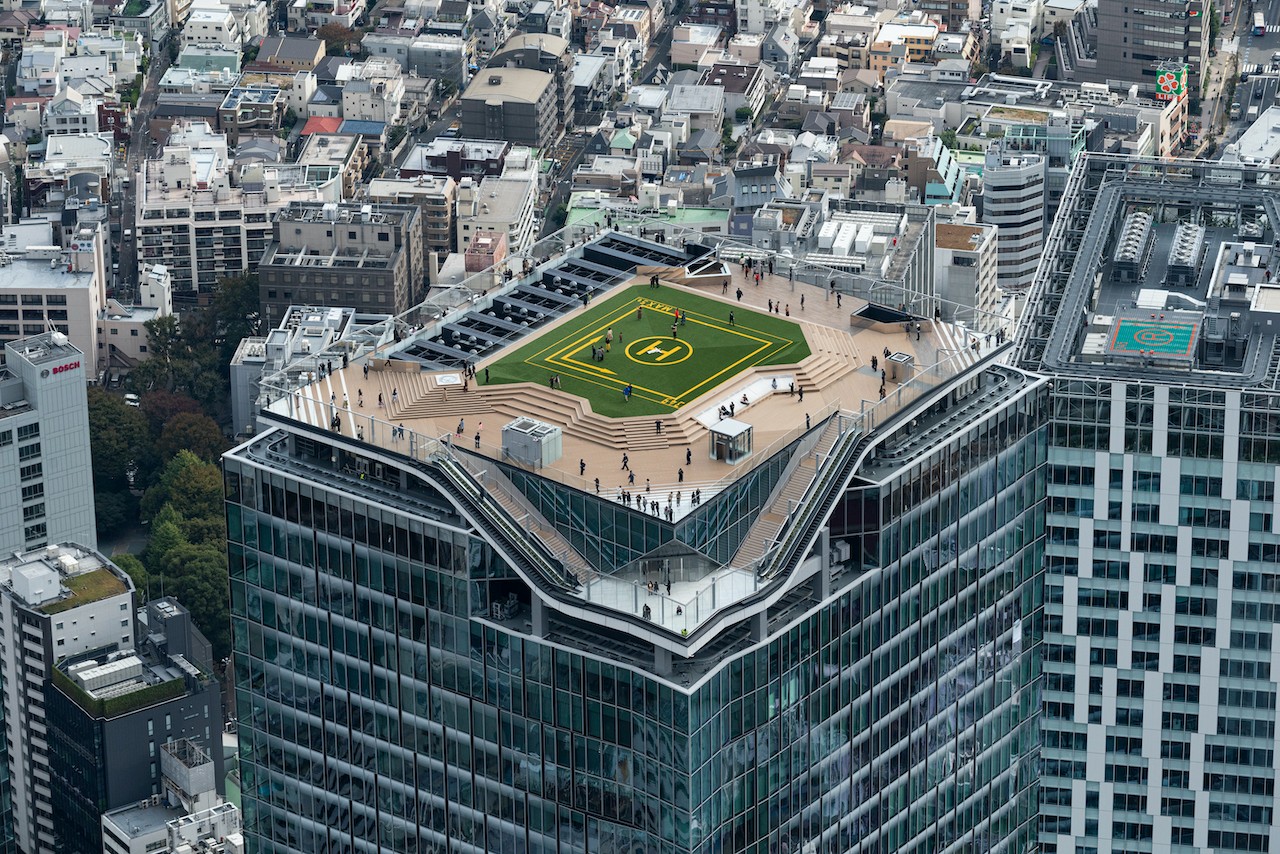
▼澀谷夜景
Shibuya sky nightview ? 澀谷SCRAMBLE SQUARE
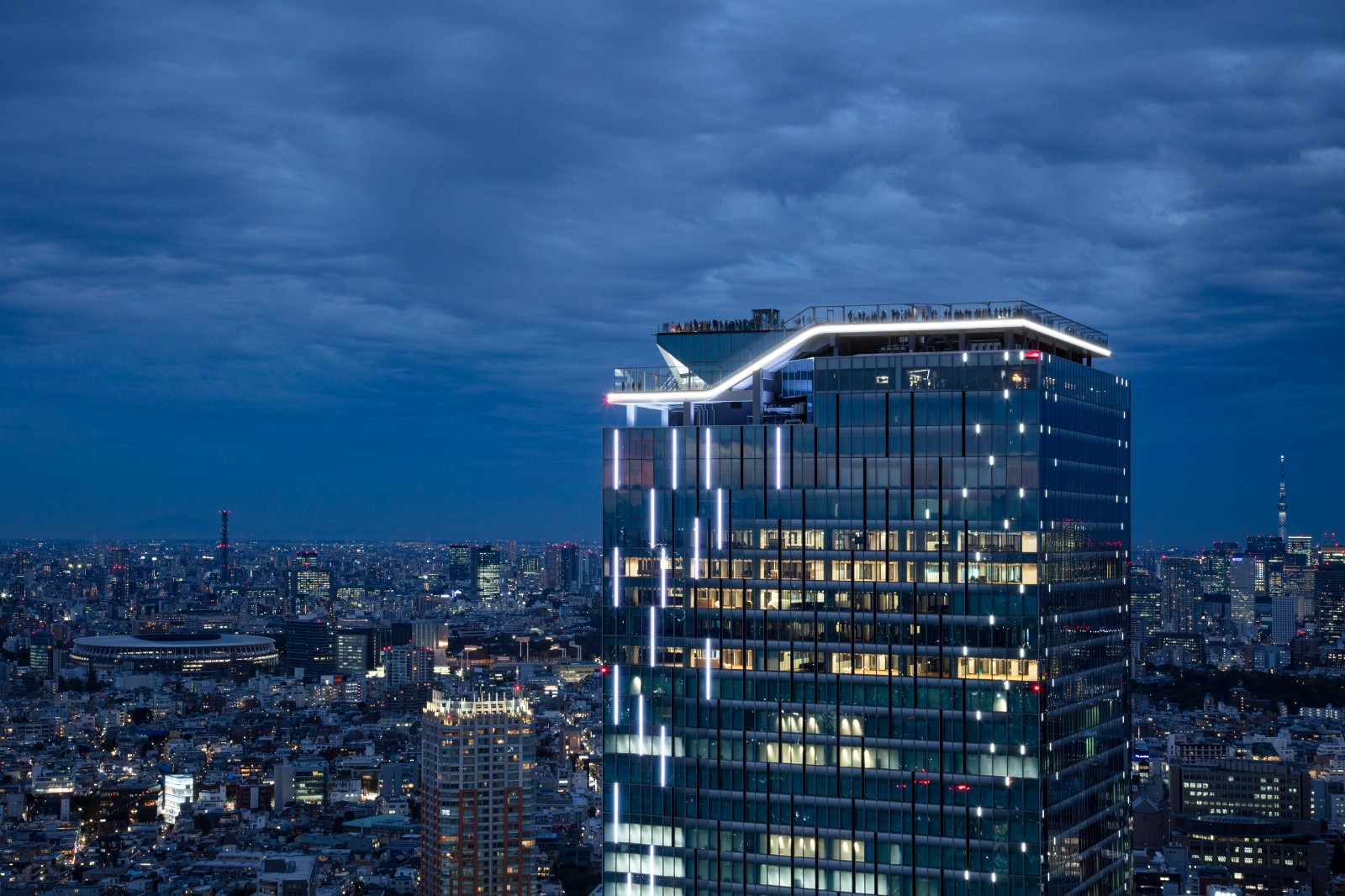
位于混亂街區(qū)中心的車站及周邊區(qū)域���,和整個(gè)街區(qū)一樣復(fù)雜無序�,因此在設(shè)計(jì)上我們著重了以下三個(gè)特點(diǎn)。
The shape of the district around the station is as complex and inhomogeneous as the chaotic town itself. The project has three distinctive design features reflecting the district’s characteristics.
連接城市垂直動(dòng)線的“城市核”
“Urban Core” – Urban space connecting vertical movements
澀谷因其特有的山谷地形���、分隔街區(qū)的主干道����,以及各鐵路公司的遷移和增改建等原因�����,造成了街區(qū)被隔斷�����,人行動(dòng)線錯(cuò)綜復(fù)雜�����。為解決上述問題���,我們?cè)谠O(shè)計(jì)中引入了垂直空間“城市核”����,以確保順暢的縱向移動(dòng)��。“城市核”宛如凹陷的超高層建筑����,面向城市綻放獨(dú)特的魅力。其外觀采用螺旋上升的百葉設(shè)計(jì)����,保持了與周圍城市景觀的連續(xù)性���。
Because of the valley topography peculiar to this area, the arterial roads dividing the town, and relocation and extension/reconstruction repeated by railway companies, Shibuya was fragmented and became a city that is difficult for pedestrians to navigate. In order to solve these problems, the vertical atrium space dubbed as the “Urban Core” was designed to realize smooth longitudinal movements. The Urban Core made its presence known in the city with its unique “dented” tower form. Its fa?ade features rows of louvers spiraling upwards, breaking up its enormous scale to provide a sense of continuity with the surrounding urban landscape.
▼“城市核”剖面圖
“Urban Core” ? 澀谷SCRAMBLE SQUARE
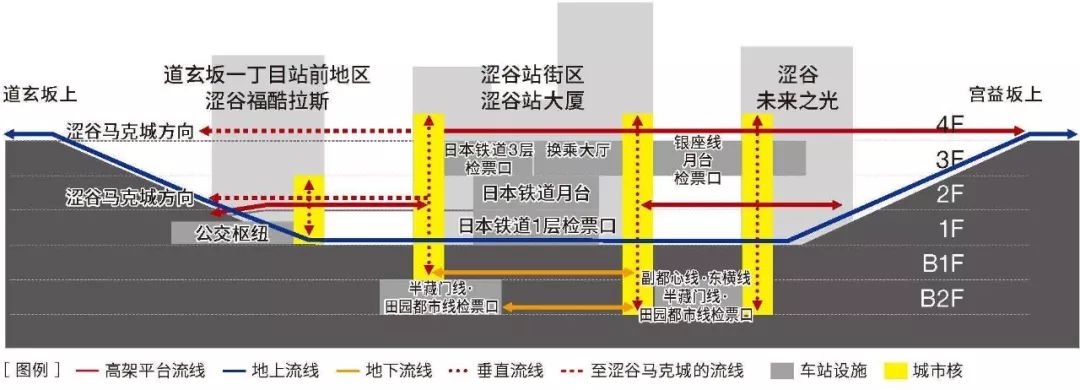
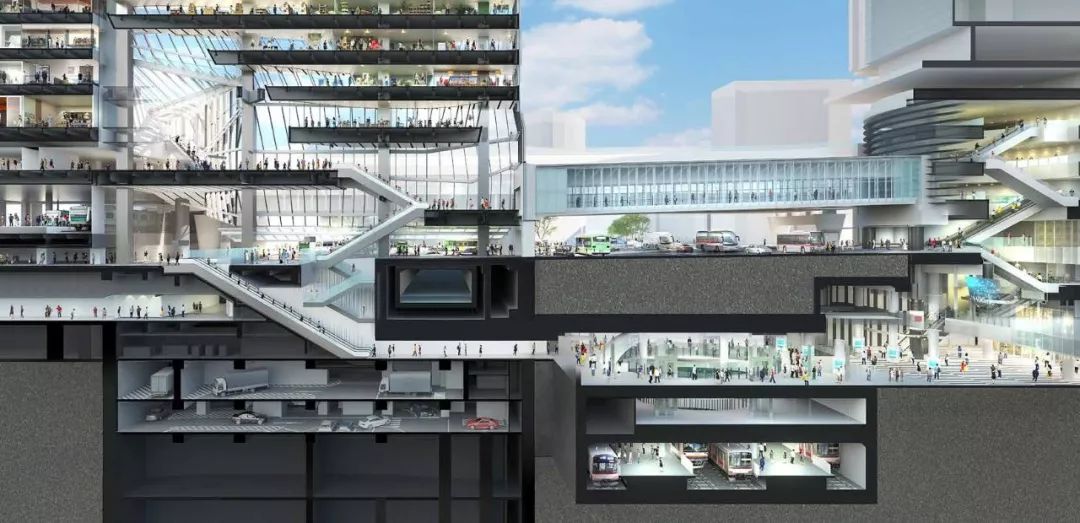
▼建筑立面螺旋上升的百葉設(shè)計(jì)
Fa?ade features rows of louvers spiraling upwards ? 澀谷SCRAMBLE SQUARE
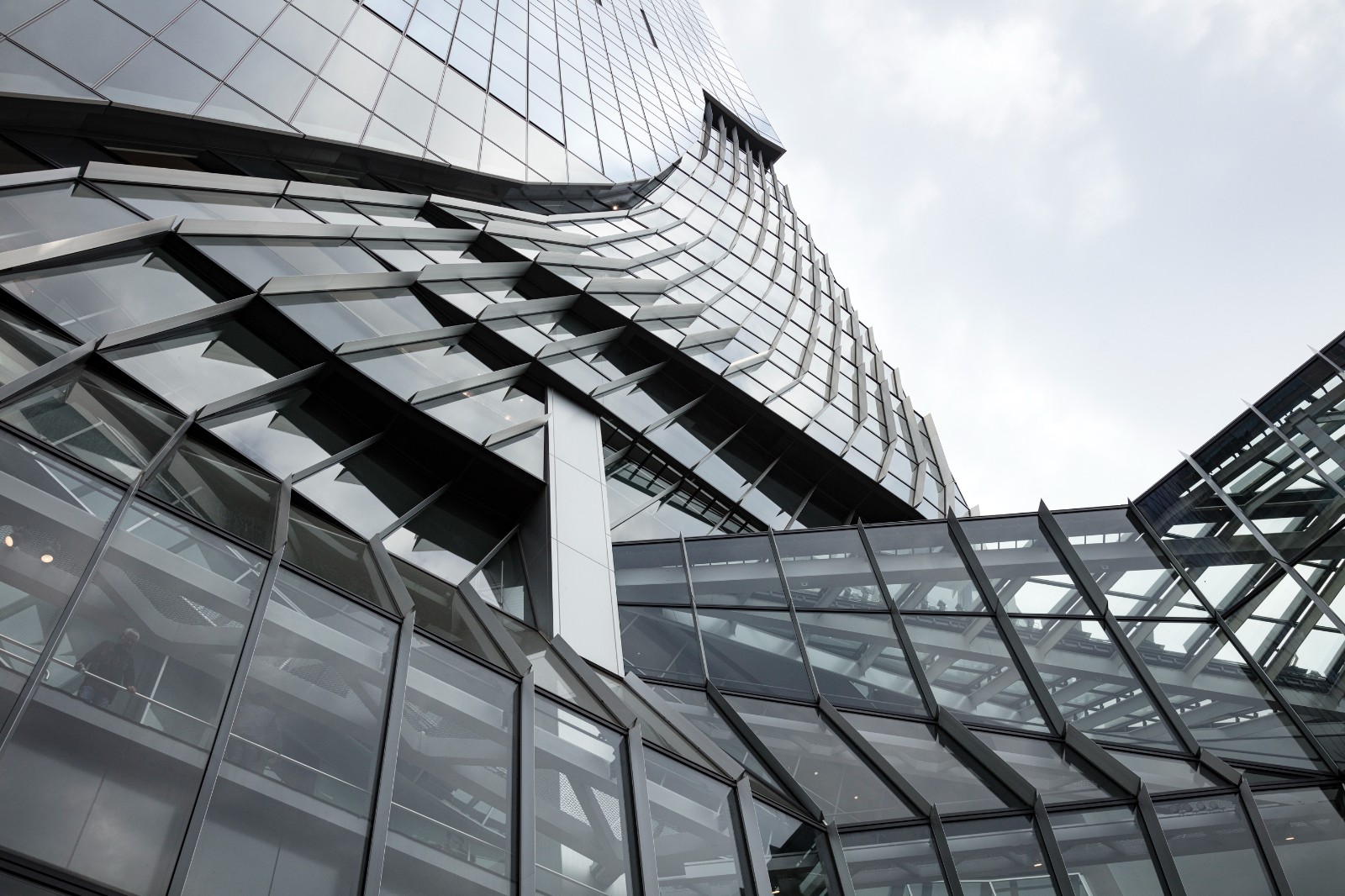
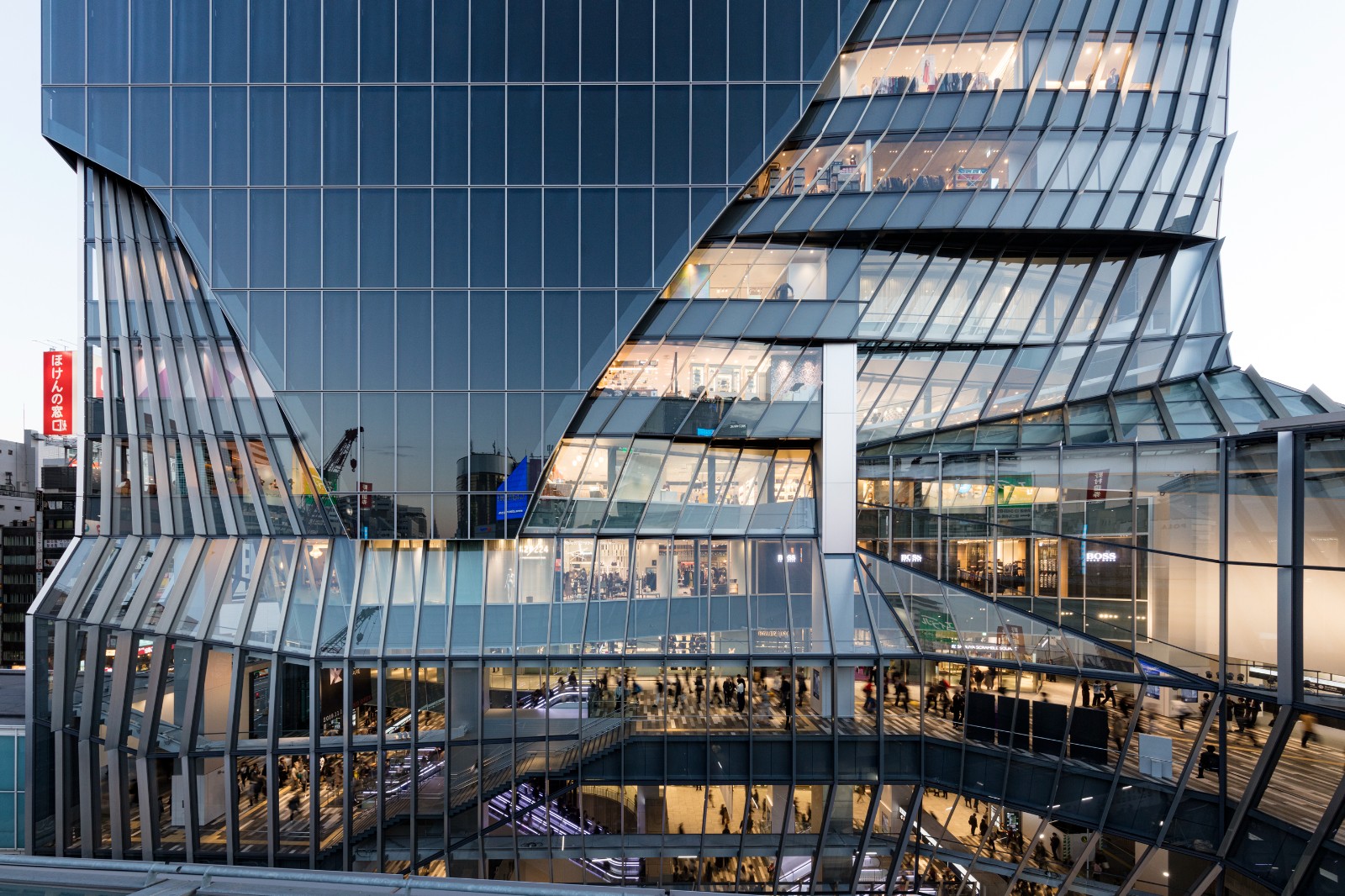
▼建筑內(nèi)部垂直空間
Vertical atrium space in the building ? 澀谷SCRAMBLE SQUARE
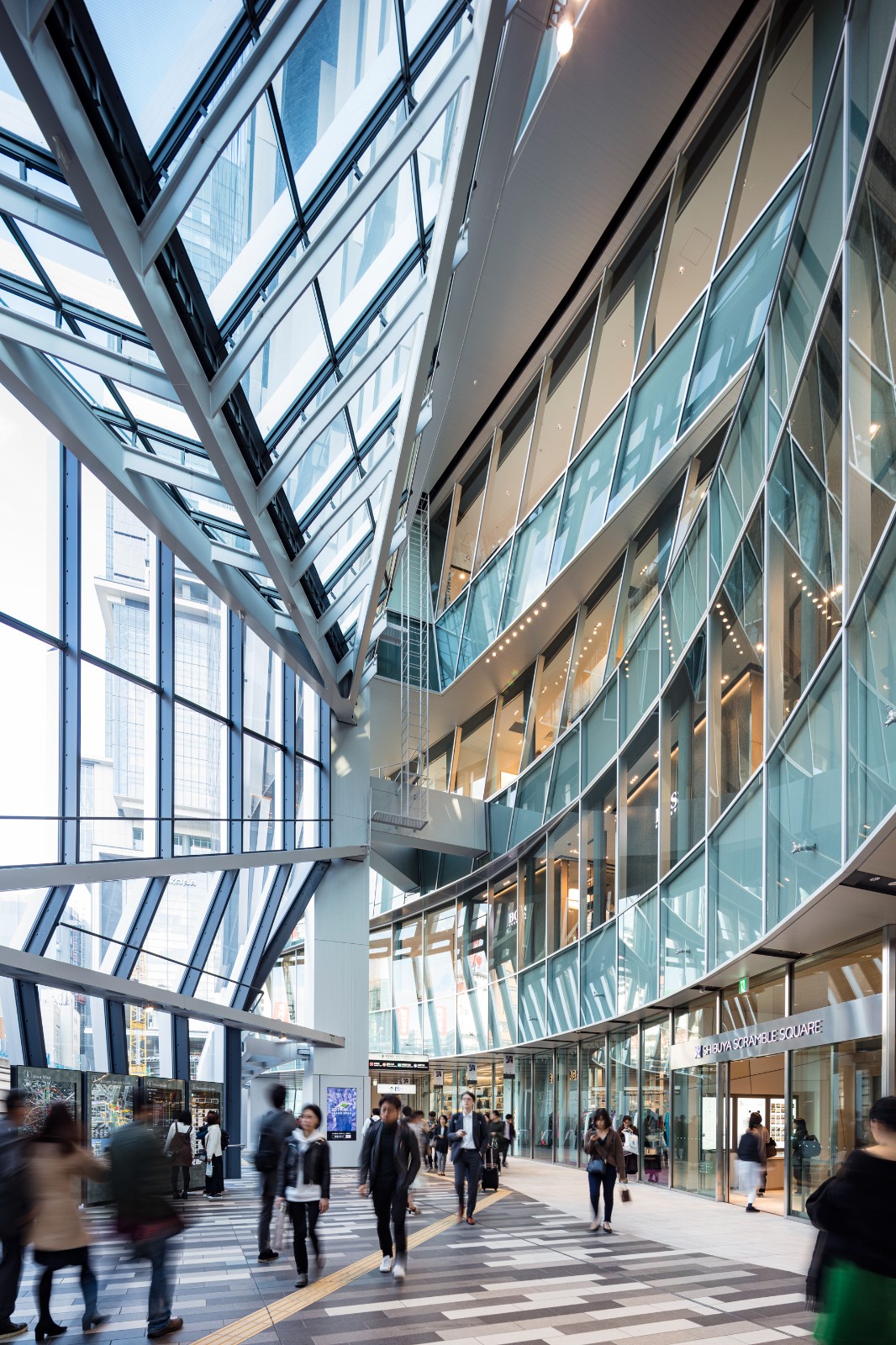
收斂于拐角的外裝設(shè)計(jì):與城市緊密相連的超高層地標(biāo)建筑
Drawing eyes to the corners – Design to connect the super high-rise and the city below
由于澀谷街區(qū)的道路和鐵路以谷底為中心呈放射狀向外延伸����,所以視線多集中于“拐角”而非“平面”上����。為了使超高層建筑適應(yīng)于廣泛的城市結(jié)構(gòu),我們采用了收斂于拐角的外裝設(shè)計(jì)����。
超過4m的大幅Low-E玻璃外裝在拐角處略有變形,使光線反射更加生動(dòng)����,富于變化�����。玻璃上的白色陶瓷印花在接近拐角處變得透明���,形成了視覺上的平面到拐角的自然流動(dòng)。這種“收斂于拐角的外裝設(shè)計(jì)”��,既是低層城市核設(shè)計(jì)的延續(xù)����,又與頂部敞開式觀景設(shè)施SHIBUYA SKY的設(shè)計(jì)緊密相連,實(shí)現(xiàn)了與整個(gè)澀谷街區(qū)的立體化連接�����。
In Shibuya, roads and railways radiate out from its center on the valley floor, making “corners” more visible than “sides.” The tower is designed to draw the eye towards its corners to correspond to the town’s urban landscape.
Each pane of Low-E glass on the fa?ade is over four meters tall. The shape of the panes transforms slightly on the tower’s corners, changing the appearance of their reflections. The white ceramic print placed over the glass panes is designed to increase its transparency towards the corners to create a visual flow. The flow starting at the lower portion of the building continues upwards to the rooftop observation deck just as the tower rising from the street to the sky.
▼外立面概念圖
Diagram of the building facade
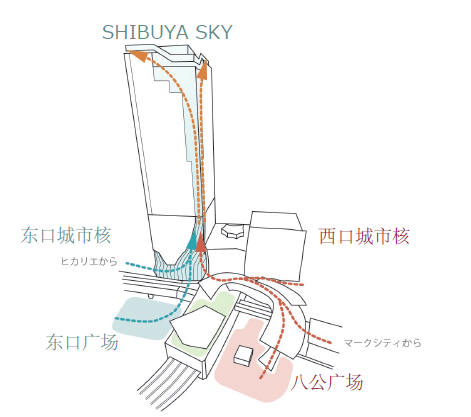
▼東立面
East facade ? 鈴木研一/Ken’ichi Suzuki
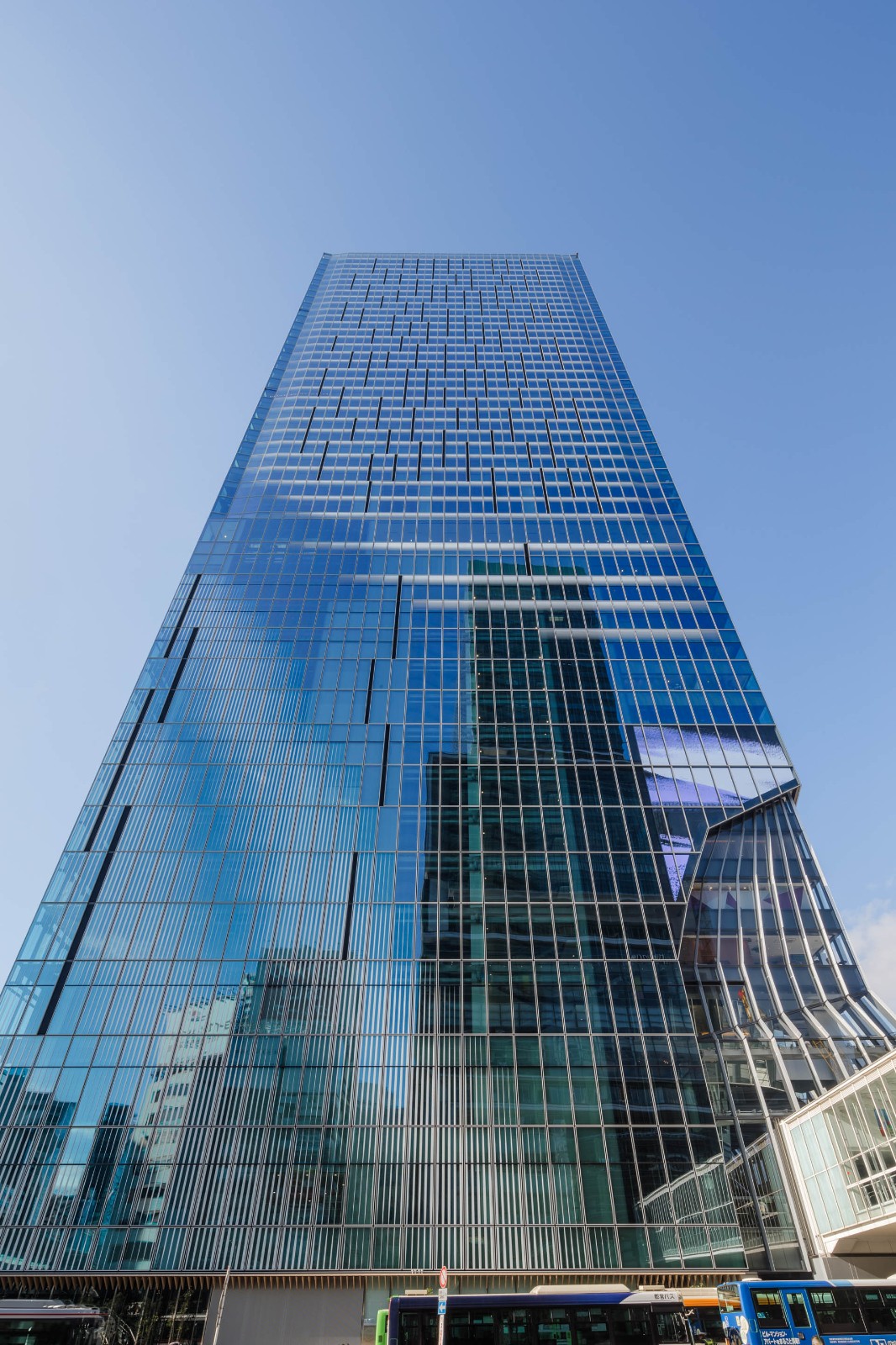
▼玻璃幕墻
Glass facade ? 鈴木研一/Ken’ichi Suzuki
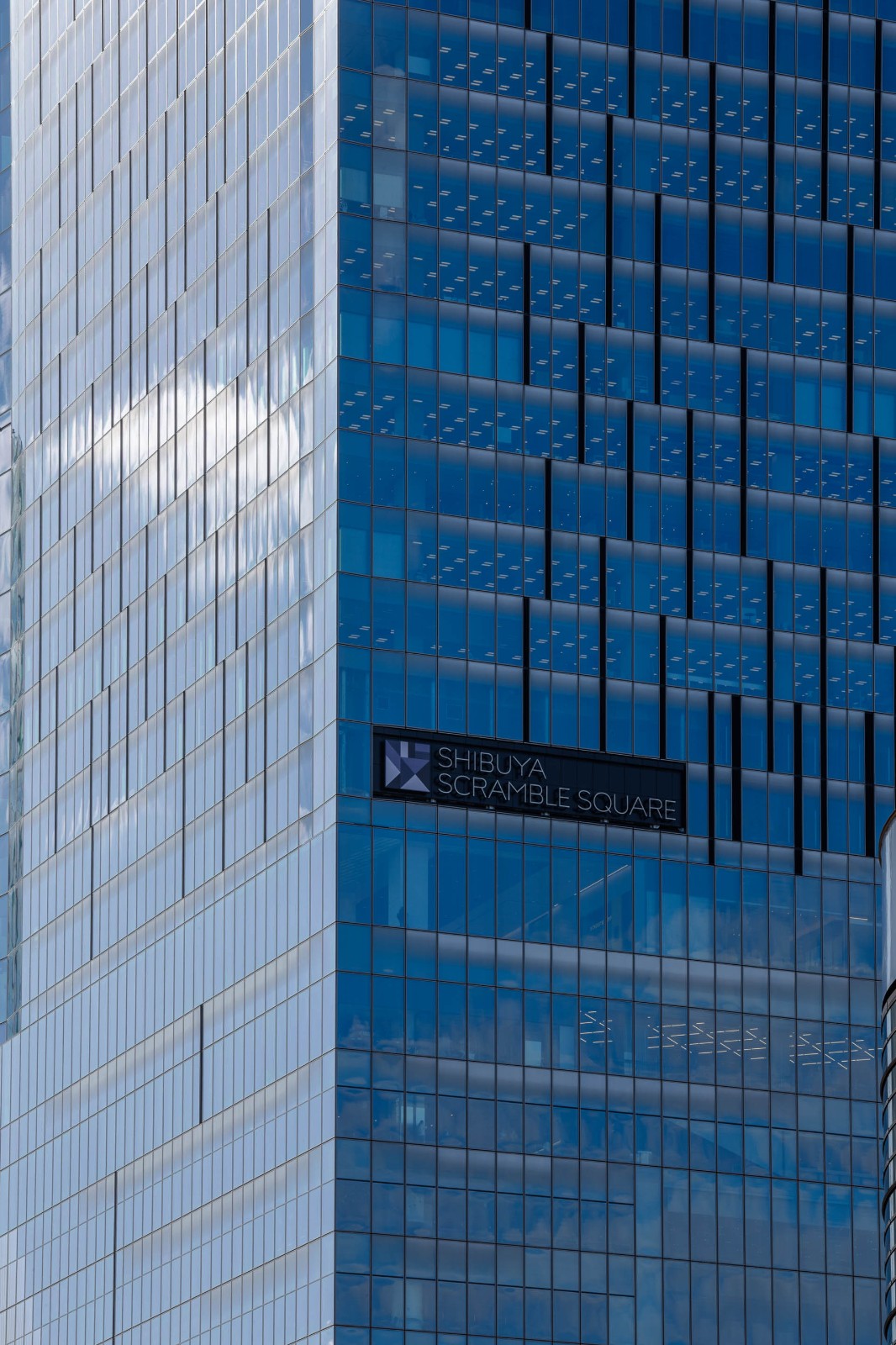
▼東南立面
South east facade ? 鈴木研一/Ken’ichi Suzuki
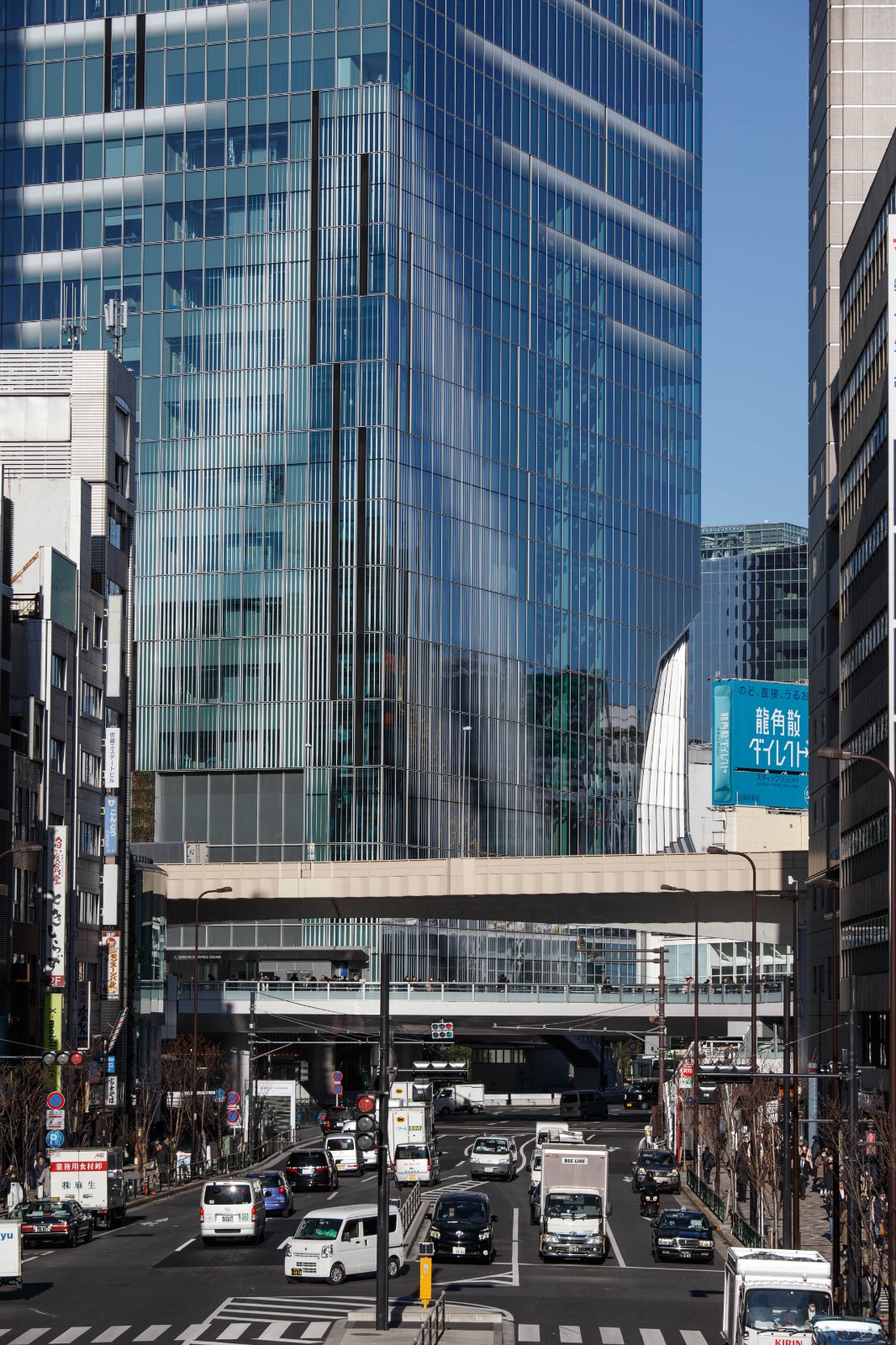
隱于鬧市中的世外桃源:俯瞰東京的觀景設(shè)施「SHIBUYA SKY」
“SHIBUYA SKY” – Observatory for escaping the city while being in it
在這座高達(dá)230m的超高層建筑屋頂����,設(shè)置了可將整個(gè)東京一覽無余的大型觀景設(shè)施“SHIBUYA SKY”。為了讓置身于此的游客能夠徹底遠(yuǎn)離城市的喧囂與繁雜�����,室外展望空間在設(shè)計(jì)上刻意做到?jīng)]有任何冗余,僅以巨大平臺(tái)空間加之極富透明感的玻璃外裝的形式呈現(xiàn)���。站在平臺(tái)中央�����,可360度無遮擋地享受無限廣闊的天空和東京美景���,仿佛置身于空中,可以全身心感受東京這座城市勢(shì)不可擋的活力與躍動(dòng)�����。作為全新的空中公共空間����,SHIBUYA SKY完美連接了水平分布的澀谷街區(qū)景觀和垂直延伸的超高層開發(fā)�����。
The 230m-tall tower is crowned with the observatory, SHIBUYA SKY, featuring an outstanding panoramic view of Tokyo. This vast observatory deck is intentionally left empty to free visitors from the hustle and bustle of the city. The deck’s perimeter is surrounded by transparent glass screens to provide the unobstructed 360-degree view and allow visitors to simultaneously feel Tokyo’s dynamic energy and a sense of unity with the sky. As a new floating public space, SHIBUYA SKY connects Shibuya’s radiating townscape and rising skyscrapers.
▼在玻璃外裝的觀景平臺(tái)俯瞰東京天際線
The deck’s perimeter is surrounded by transparent glass screens to provide a 360-degree view of Tokyo’s skyline ? 澀谷SCRAMBLE SQUARE
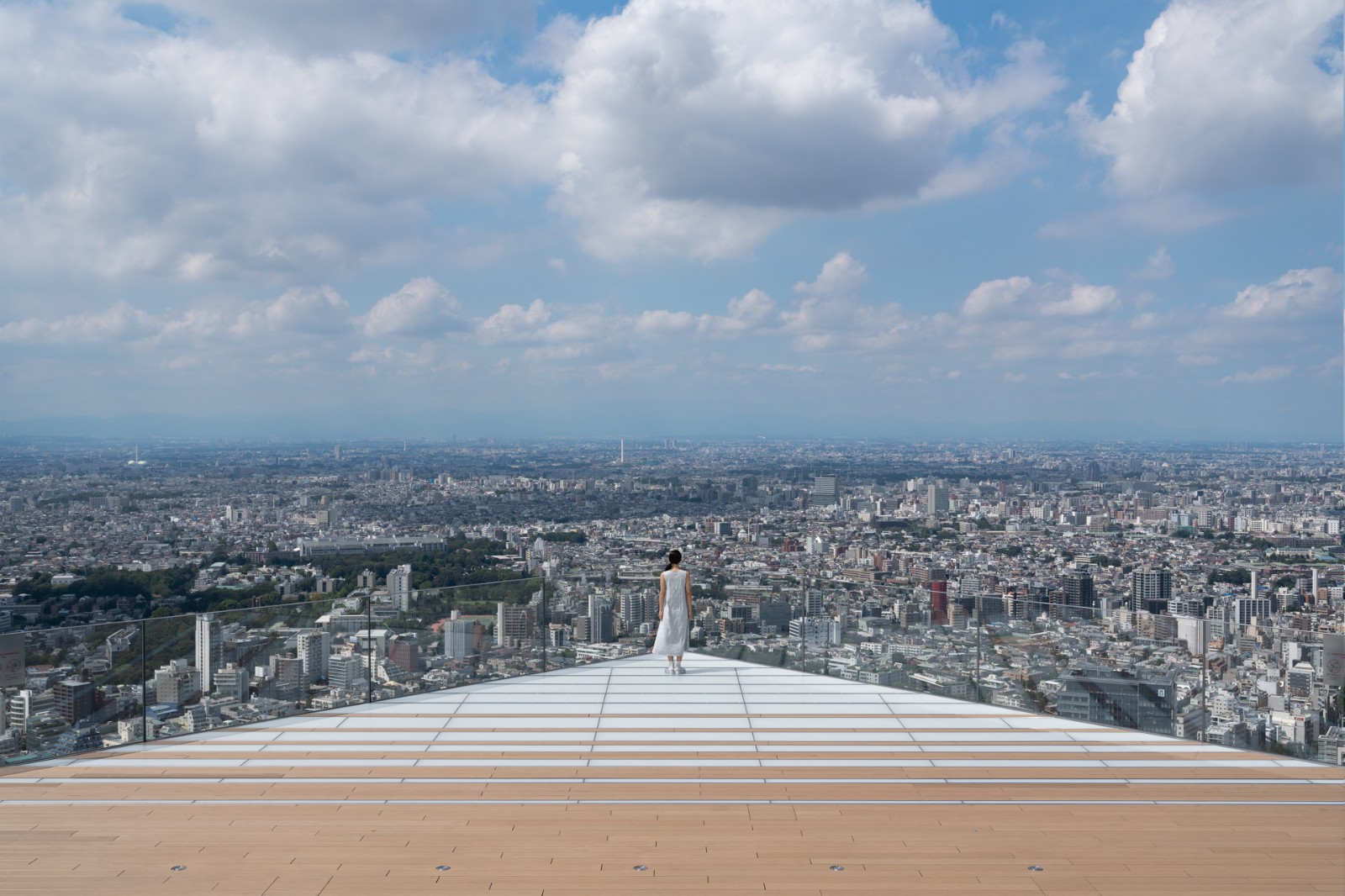
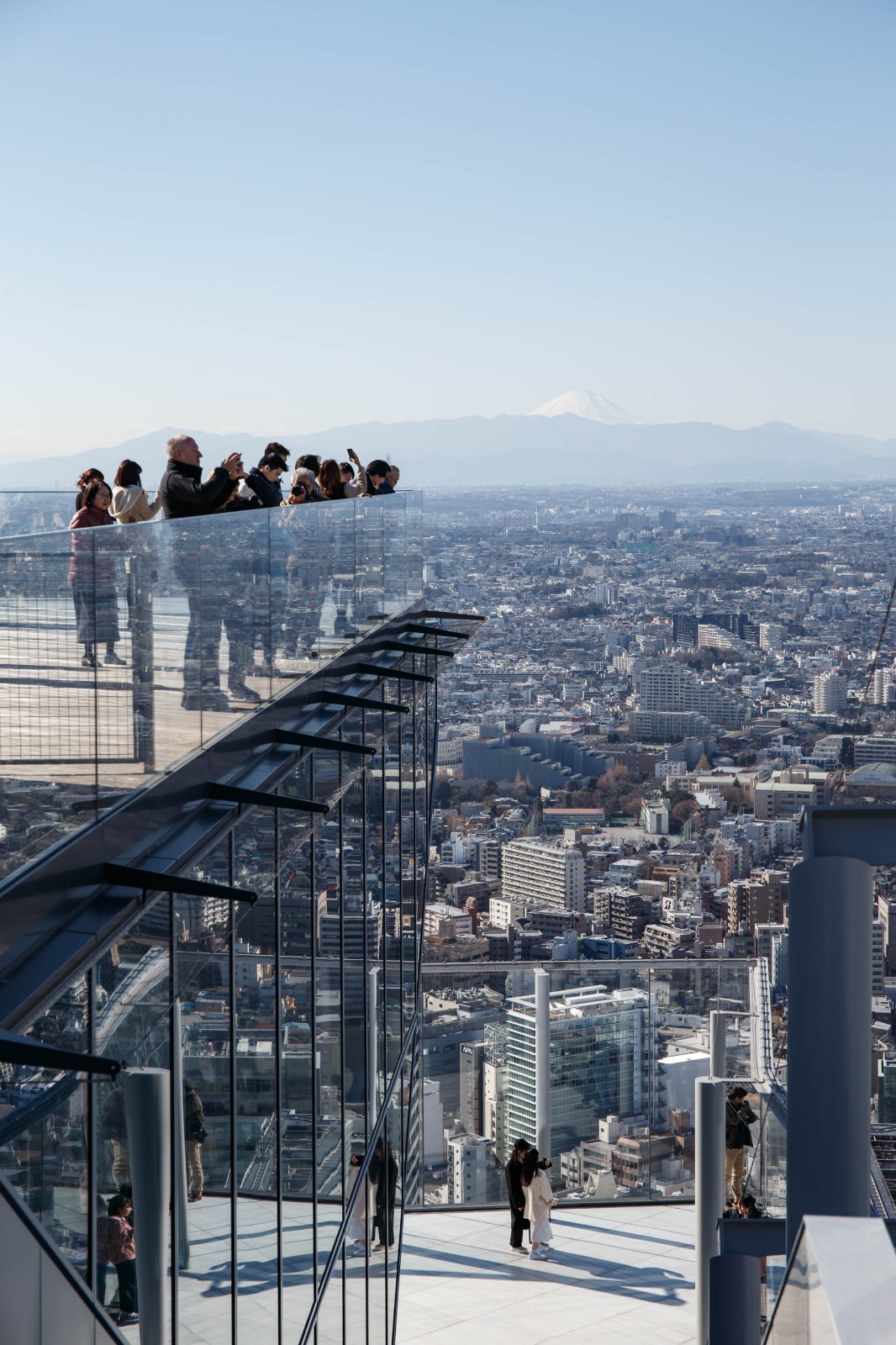
? 鈴木研一/Ken’ichi Suzuki
▼屋頂?shù)牡牟萜郝杜_(tái)
Turf terrace of Shibuya Sky ? 鈴木研一/Ken’ichi Suzuki
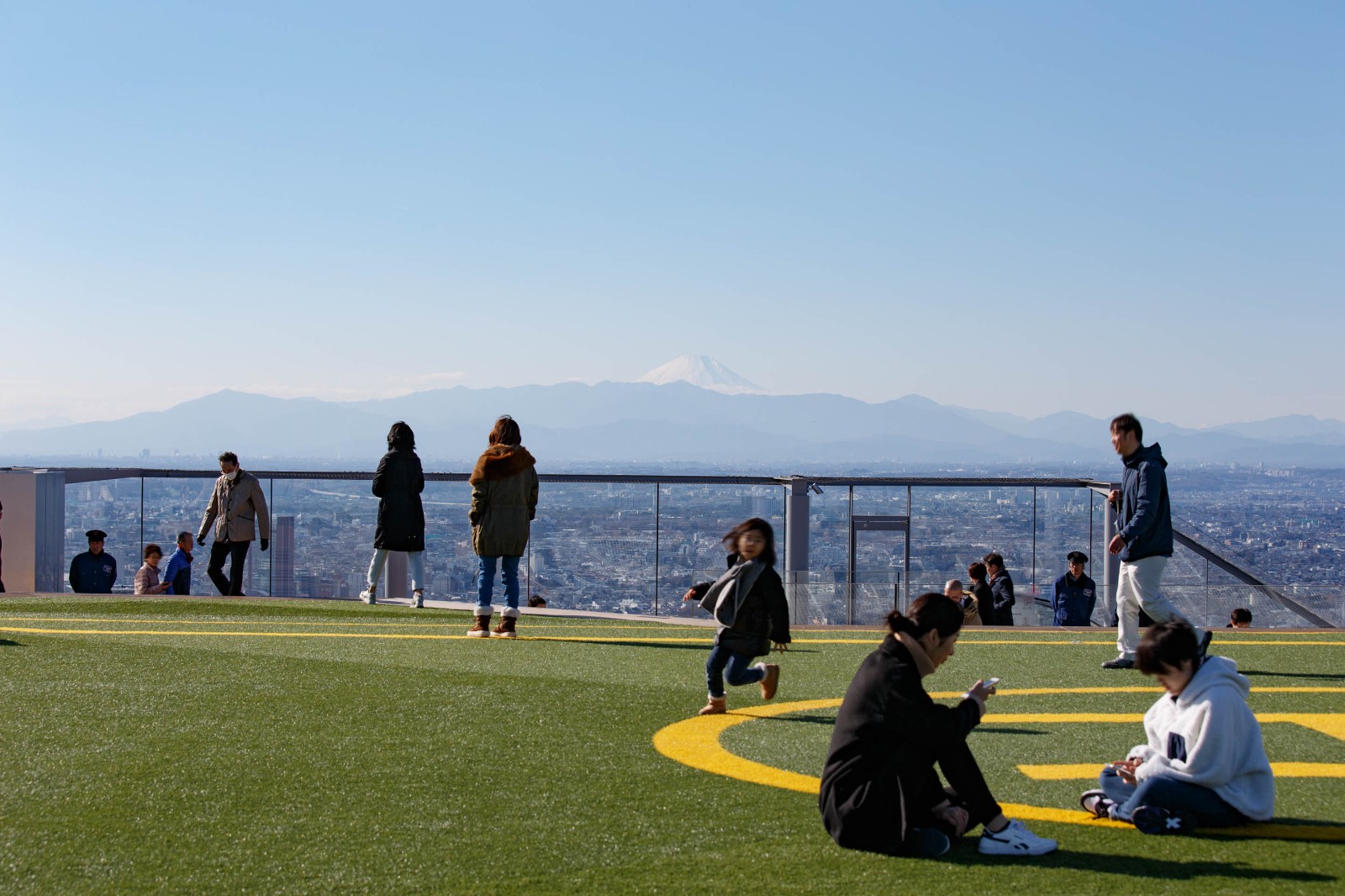
▼SHIBUYA SKY大堂
SHIBUYA SKY lobby ? 鈴木研一/Ken’ichi Suzuki
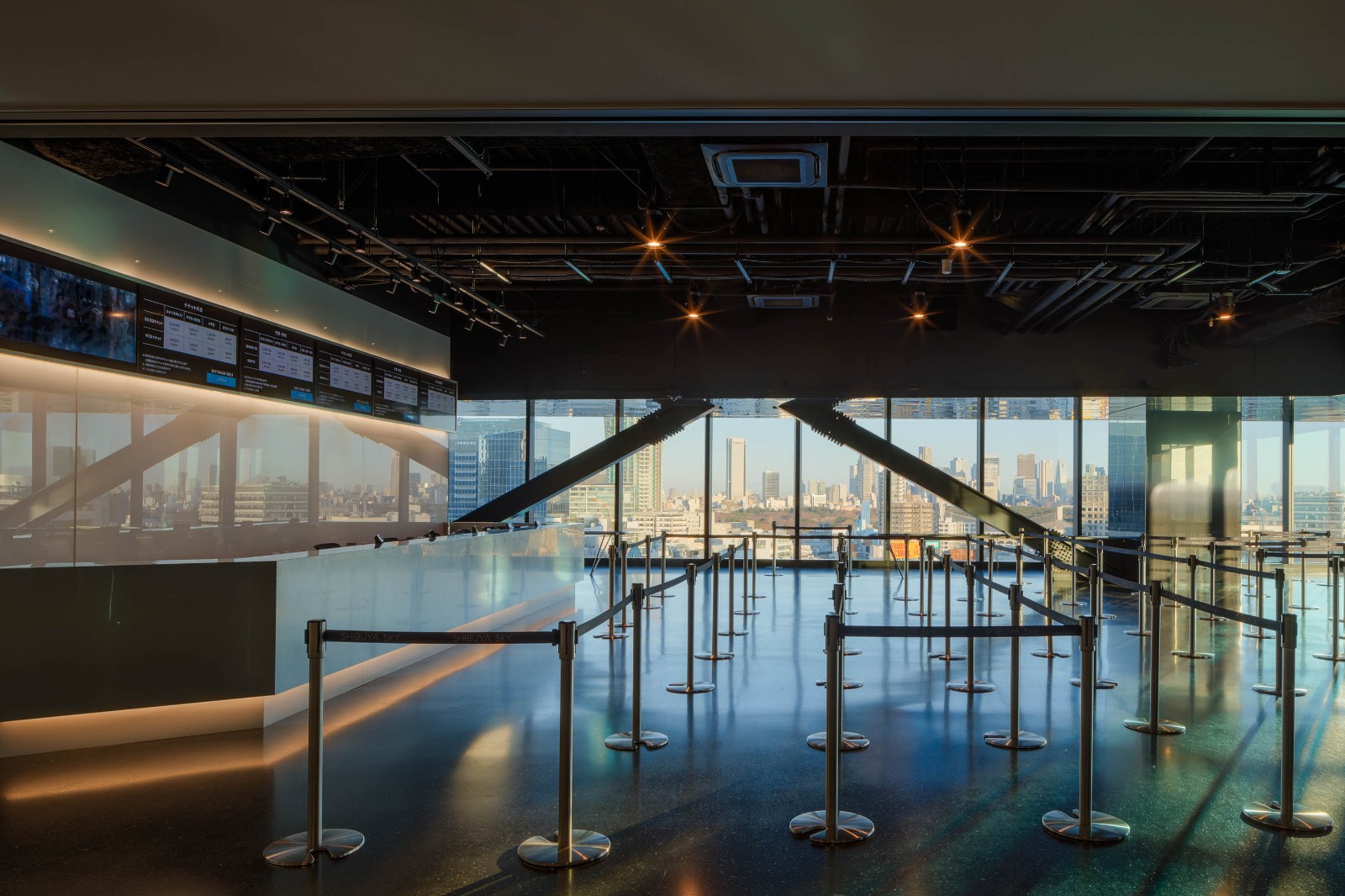
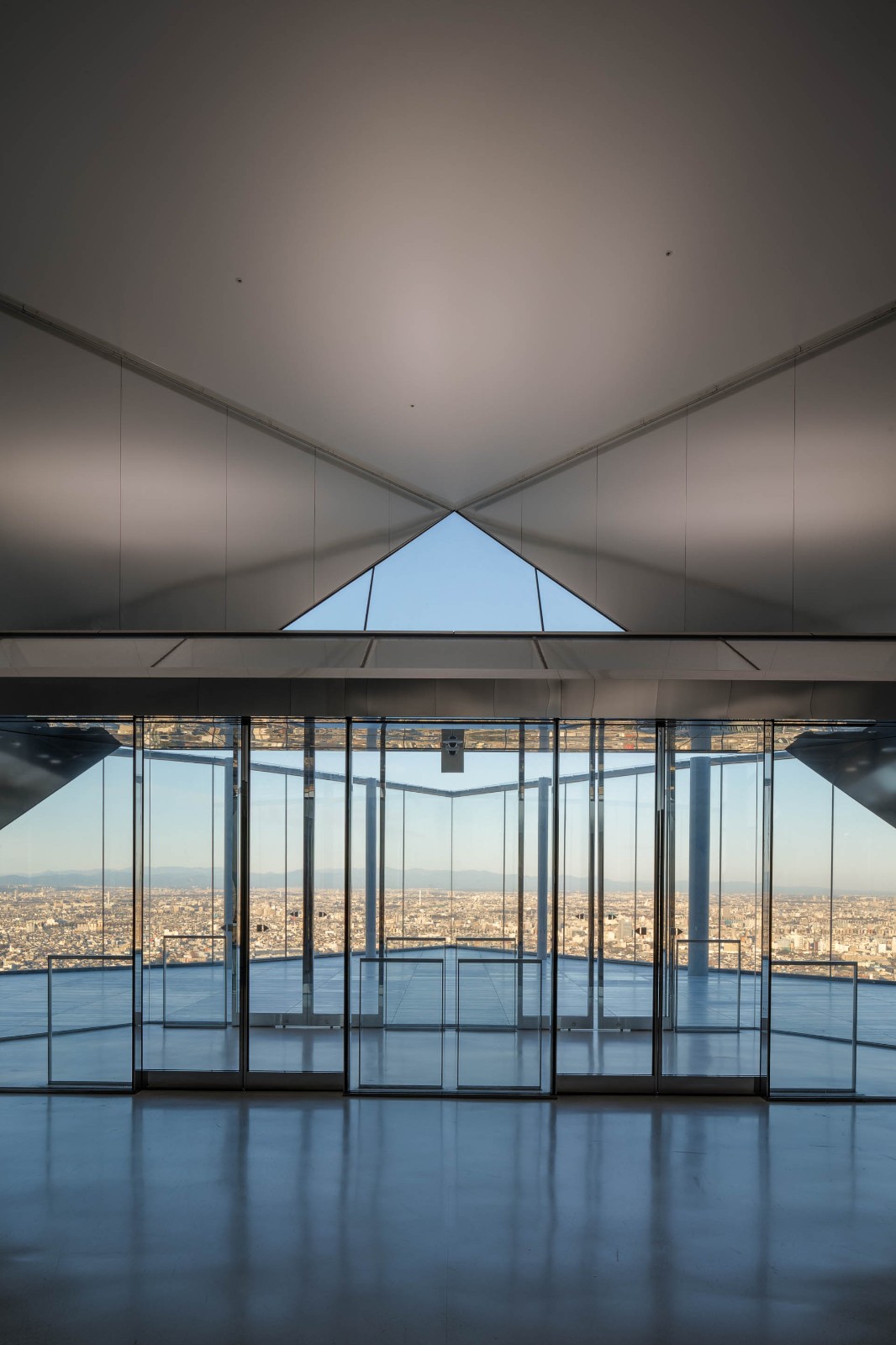
? 鈴木研一/Ken’ichi Suzuki
▼SHIBUYA SKY走廊
Shibuya sky corridor ? 鈴木研一/Ken’ichi Suzuki

▼觀景平臺(tái)夜景
Nightview on the shibuya sky ? 澀谷SCRAMBLE SQUARE
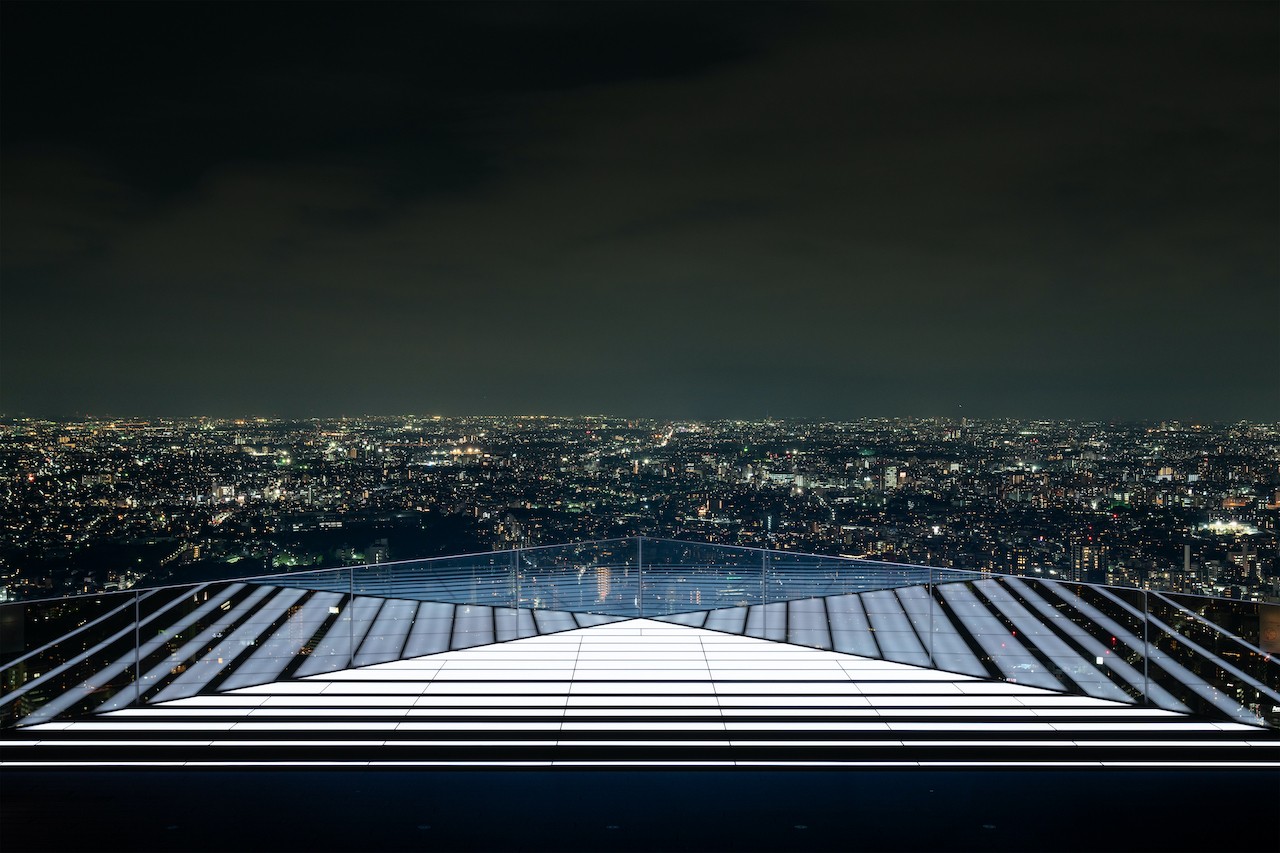
▼燈光裝置:交錯(cuò)的光柱
Light show: crossing light ? 澀谷SCRAMBLE SQUARE
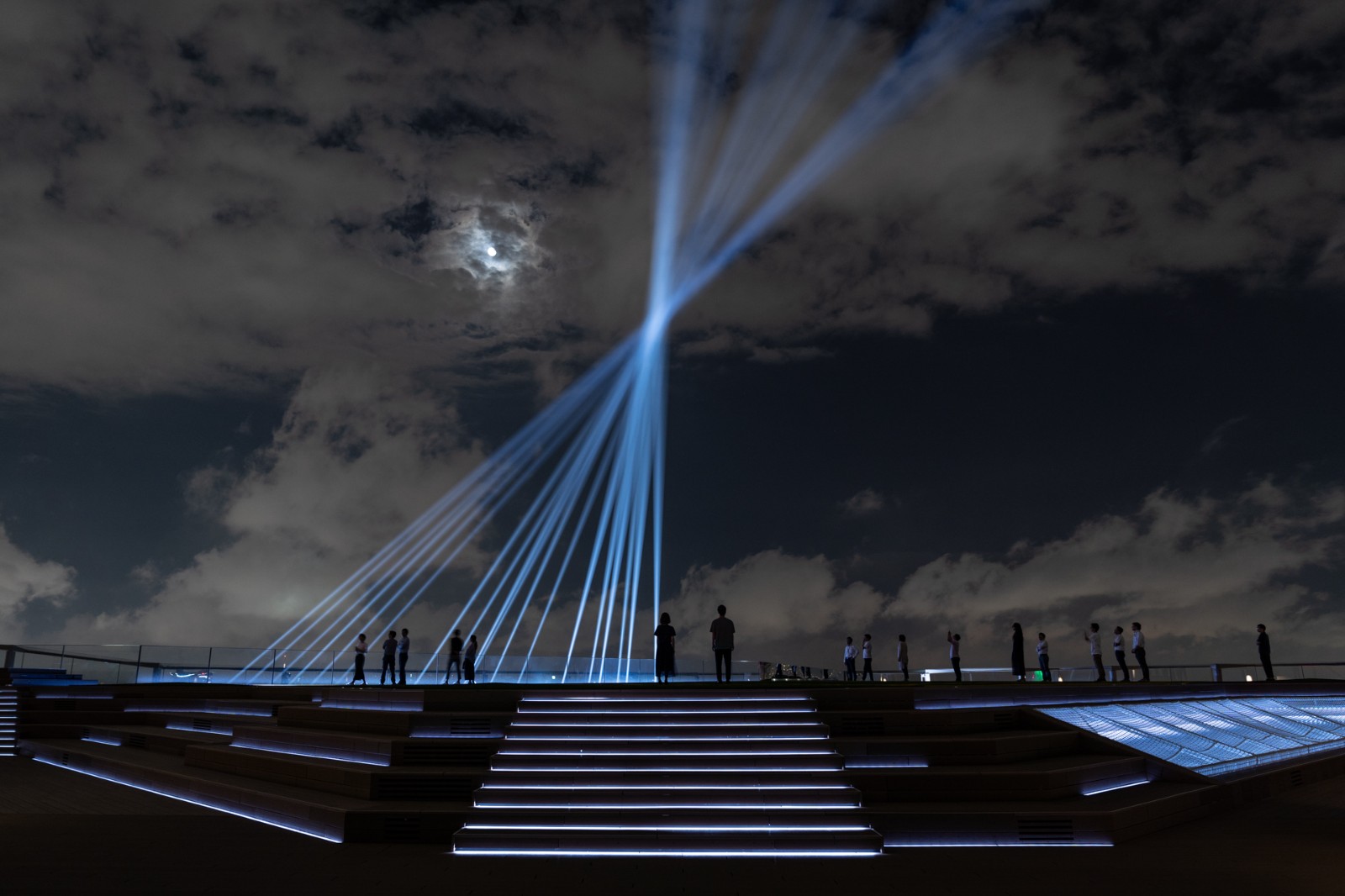
▼燈光裝置:時(shí)間長(zhǎng)河
Light show: time river ? 澀谷SCRAMBLE SQUARE
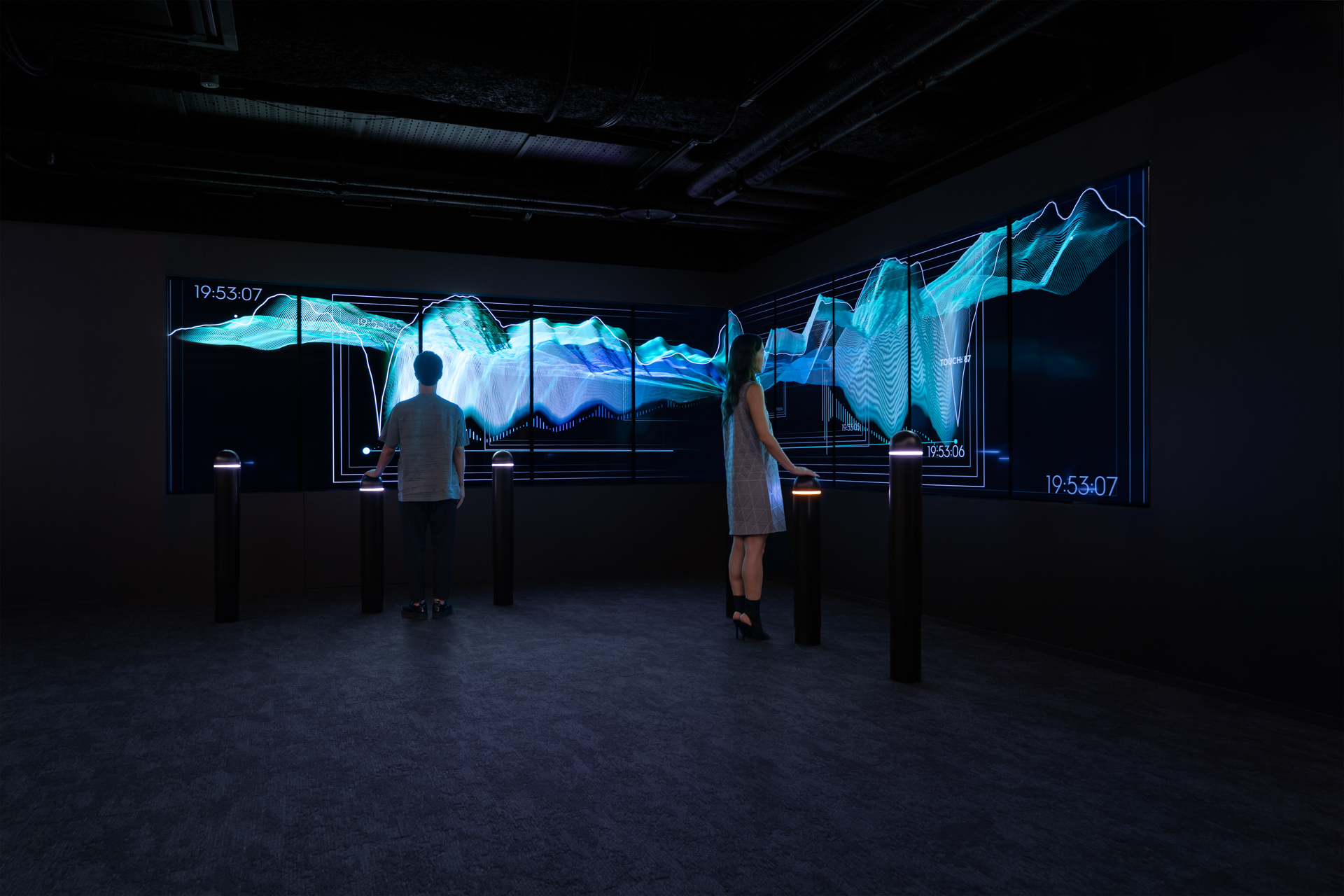
項(xiàng)目圖紙
▼剖面圖
Section
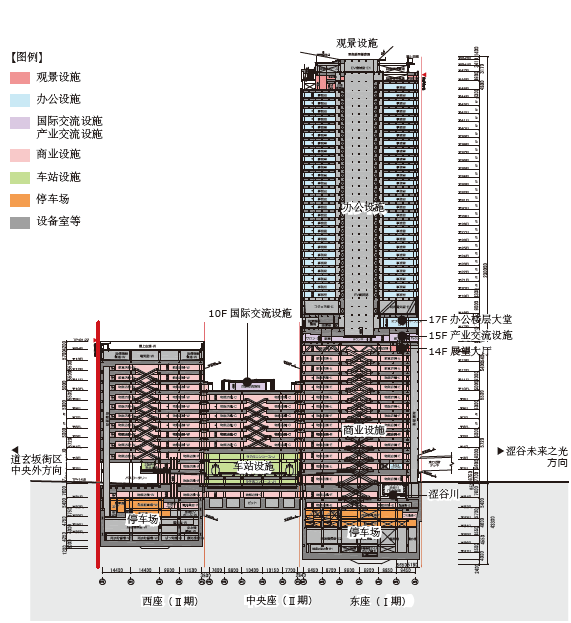
▼配置圖
Configuration diagram
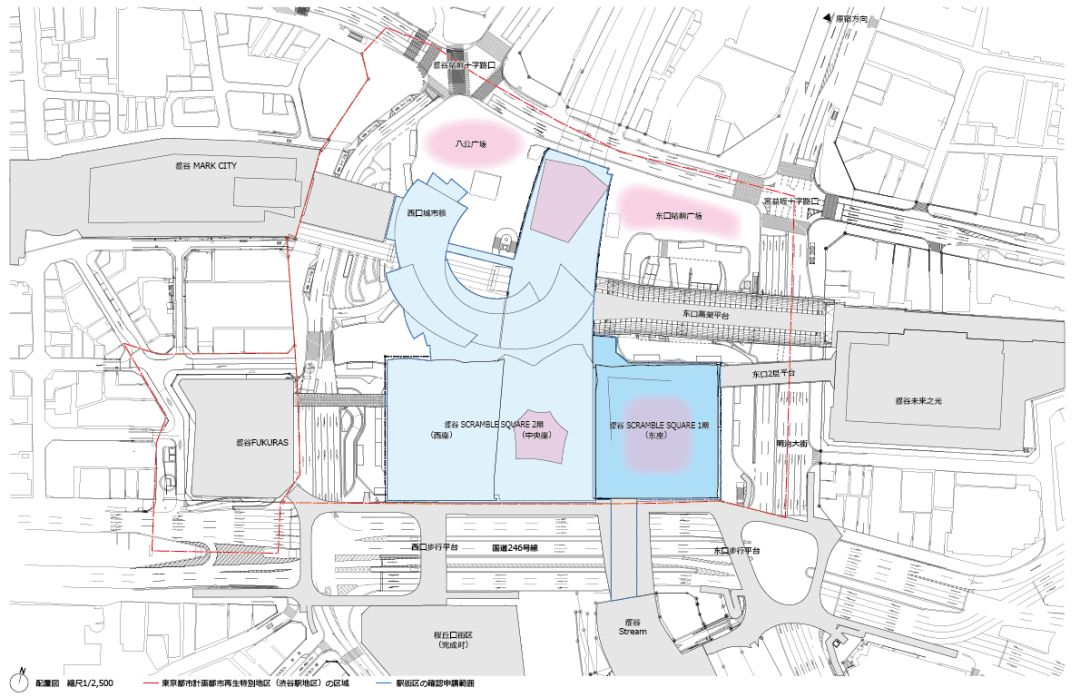
項(xiàng)目信息
項(xiàng)目名稱:澀谷SCRAMBLE SQUARE Ⅰ期(東座)
項(xiàng)目位置:東京都澀谷區(qū)
主要用途:辦公���、商業(yè)���、觀景設(shè)施�����、停車場(chǎng)等
業(yè)主:東急株式會(huì)社��、東日本旅客鐵道株式會(huì)社�����、東京地鐵株式會(huì)社
建筑設(shè)計(jì):日建設(shè)計(jì)���、隈研吾建筑都市設(shè)計(jì)事務(wù)所
設(shè)計(jì):澀谷站周邊整備共同企業(yè)體(株式會(huì)社日建設(shè)計(jì)、株式會(huì)社東急設(shè)計(jì)顧問���、株式會(huì)社JR東日本建筑設(shè)計(jì)�����、METRO開發(fā)株式會(huì)社)
用地面積:約15,300㎡(包括第Ⅱ期(中央座?西座))
建筑面積:約181,000㎡
建筑層數(shù):地下7層��、地上47層
最高高度:約230m
主體結(jié)構(gòu):鋼結(jié)構(gòu)���、鋼筋混凝土結(jié)構(gòu)、勁性鋼筋混凝土結(jié)構(gòu)
施工期間:2014 年6 月?2019 年8 月
施工單位:澀谷站街區(qū)東座新建工程共同企業(yè)體(東急建設(shè)?大成建設(shè))
Project: Shibuya Scramble Square the First Phase (East Tower)
Location: Shibuya-ku, Tokyo
Project Type: Commercial, Offices, Observatory, Parking
Clients: Tokyu Corporation, East Japan Railway Company, and Tokyo Metro Co., Ltd
Design Architects: Nikken Sekkei, Kengo Kuma and Associates�Design Team and Supervision: Shibuya Station District Development Project Consortium(Nikken Sekkei Ltd + Tokyu Architects & Engineers INC. + JR-East Design Corporation + Metro Development Co., Ltd)
�Site Area: Approx. 15,300m2 (including the Second Phase for Central and West Towers)
Total Floor Area: Approx. 181,000m2
Floors: 7 basement stories, 47 stories above ground
Building Height: Approx. 230m
Main Structural Systems: Steel, steel reinforced concrete, reinforced concrete�
Construction Period: June 2014–August 2019 (63 months)
General Contractor: Shibuya Scramble Square East Tower New Construction Project Consortium (Tokyu Architects & Engineers and TAISEI Corporation)
編輯:周舟
版權(quán)聲明:本文版權(quán)歸原作者所有,請(qǐng)勿以景觀中國(guó)編輯版本轉(zhuǎn)載��。如有侵犯您的權(quán)益請(qǐng)及時(shí)聯(lián)系��,我們將第一時(shí)間刪除���。
投稿郵箱:info@landscape.cn
項(xiàng)目咨詢:18510568018(微信同號(hào))
 京公海網(wǎng)安備 110108000058號(hào)
京公海網(wǎng)安備 110108000058號(hào)























